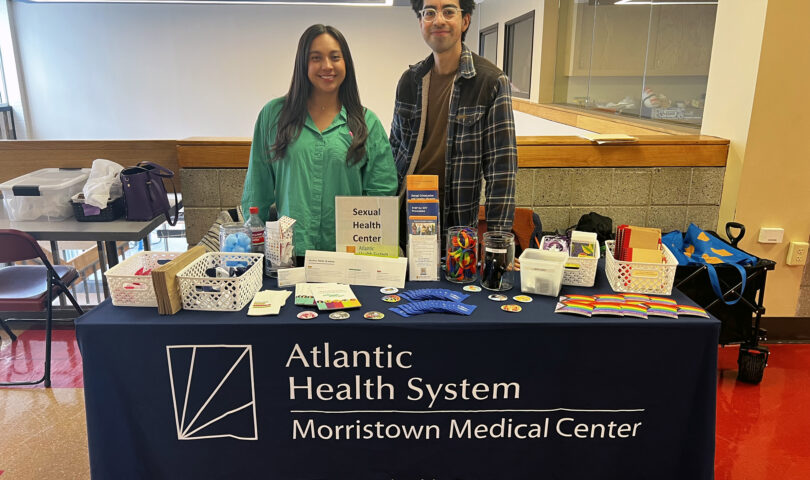Ramapo hosted the Morristown Medical Center as they offered free HIV tests as well as informational pamphlets on sexually transmitted infections (STIs) on Dec. 2, the day after World AIDS Day.
The Medical Center had a booth set up above the Atrium where people could grab pamphlets, condoms, bracelets and more, as well as ask for a free HIV test. One of the representatives would bring the interested student into SC-217 where they would be tested.
The test involved pricking the student’s finger so the nurse could see if HIV was present in their blood. This is not the only way to test for HIV, as some tests involve taking a saliva sample. After 20 minutes, the student would receive their results.
In addition to this, Friends Hall contained an exhibition on the history of HIV as well as a quilt-making booth and a table containing more pamphlets about safer sex practices and other STIs.
One of the many ideas the exhibition highlighted was the controversy surrounding HIV and how it propagated a lot of anti-gay rhetoric. When HIV was first discovered, people would even refer to it as “gay pneumonia,” “gay cancer,” “gay plague” and “gay-related immunodeficiency (GRID).”
HIV is a virus that contains opportunistic infections, “illnesses that are stronger or more frequent in those with weakened immune systems,” according to the exhibition. In the 1970s, one of the first signs of HIV’s presence was people being diagnosed with pneumocystis pneumonia (PCP). “An estimated three-in-four people living with HIV/AIDS developed PCP.”
AIDS was officially named in 1982 and it was discovered that the virus was not only found in homosexually active men but patients with hemophilia, leading to the discovery that the virus spreads through infected blood. Despite this discovery, there was still fear in the public fueled by rumors that HIV/AIDS could be spread through the air.
Another aspect of the exhibition in Friends Hall was the artists and artworks mentioned. One that was highlighted was Keith Haring, a famous artist of the pop art movement who was inspired by New York graffiti and passed away due to complications with AIDs. A year after his diagnosis, he organized The Keith Haring Foundation to provide support to AIDS research and education.
The exhibition also highlighted different individuals who were diagnosed with HIV/AIDS between people who were subjected to mistreatment because of their diagnosis to celebrities. One of these figures was Ryan White. According to the exhibition, White was diagnosed in 1985 when he was a teenager and was banned from his middle school in Indiana. Freddie Mercury and Eazy-E were also featured.
While the exhibit was undergoing, the PBS documentary “NOVA: Ending HIV in America” was playing in the background with seats arranged so people could sit and watch. The documentary offered an alternative experience of the event for participants and presented more individuals who are a part of AIDs history. One person featured in the documentary is Tommy Williams, a professional from the University of Alabama at Birmingham outpatient clinic who has also been diagnosed with HIV.
In an interview during the documentary, he describes first learning about HIV/AIDS in the ninth grade. “This girl was like, ‘he’s a sissy’ and then, so these guys was like ‘you fruit loop, you’re a fruit loop, you got AIDS, you got AIDS.’ I wanted to believe that I did not, but I also believed that if I didn’t have AIDS, it was just a matter of time.”
Fortunately for Williams, there were highly effective medications to help him once he was diagnosed with HIV. “You can live, and I’m living. I’m thriving.”
For more information about HIV/AIDS, other STIs or general sexual health information, you can visit Health Services by the campus’ South Gate.
pbortner@ramapo.edu
Featured photo by Peyton Bortner






